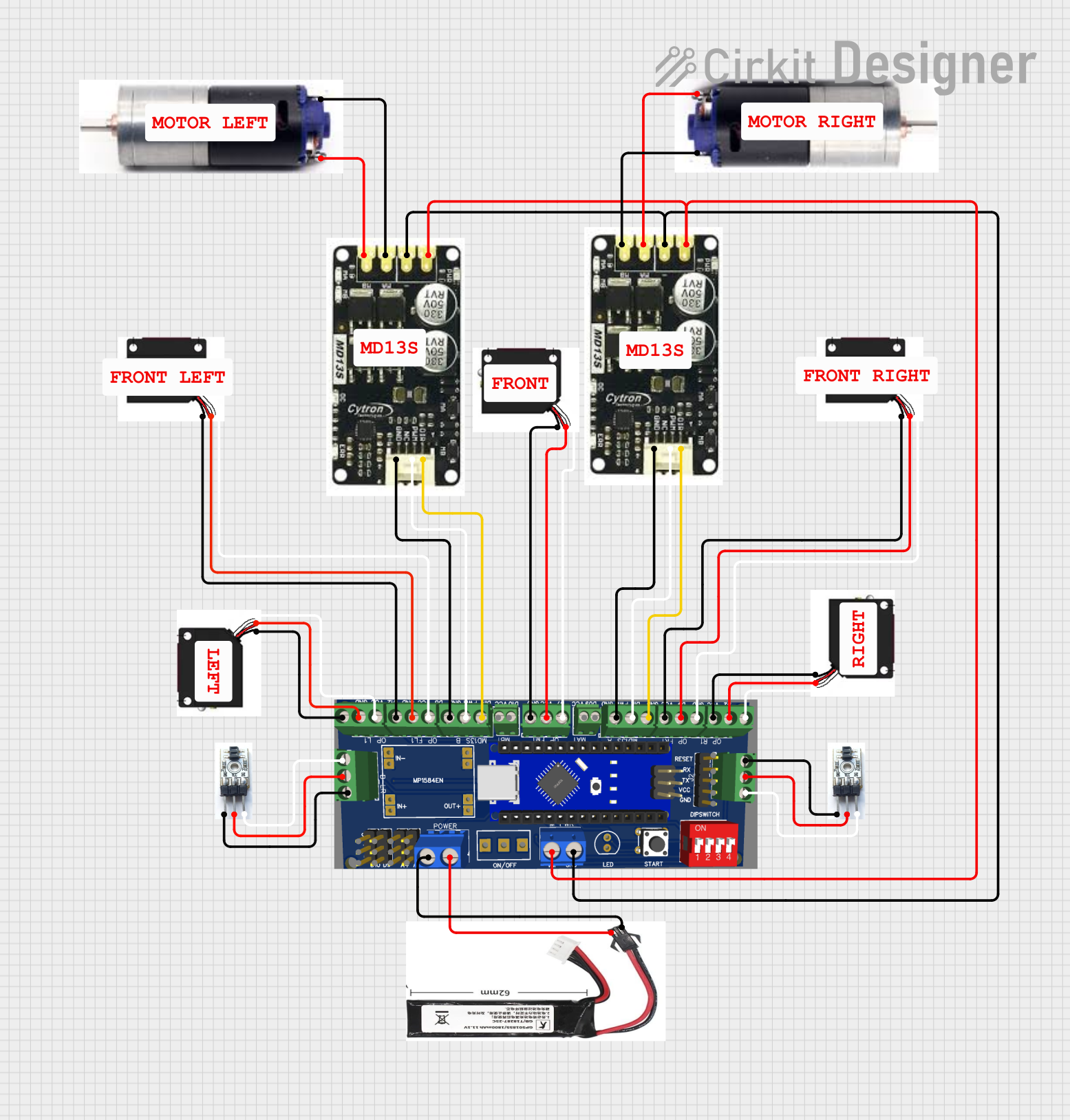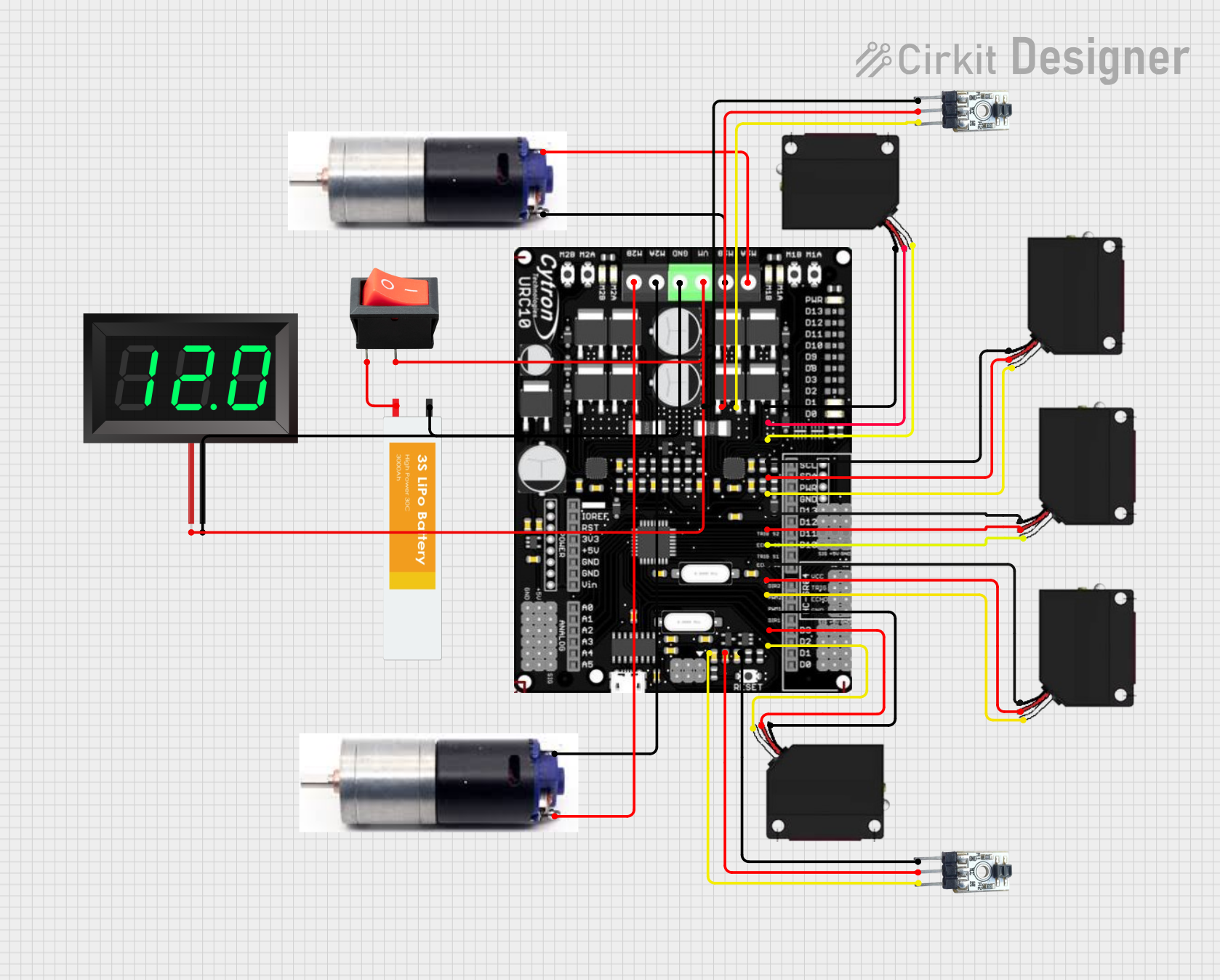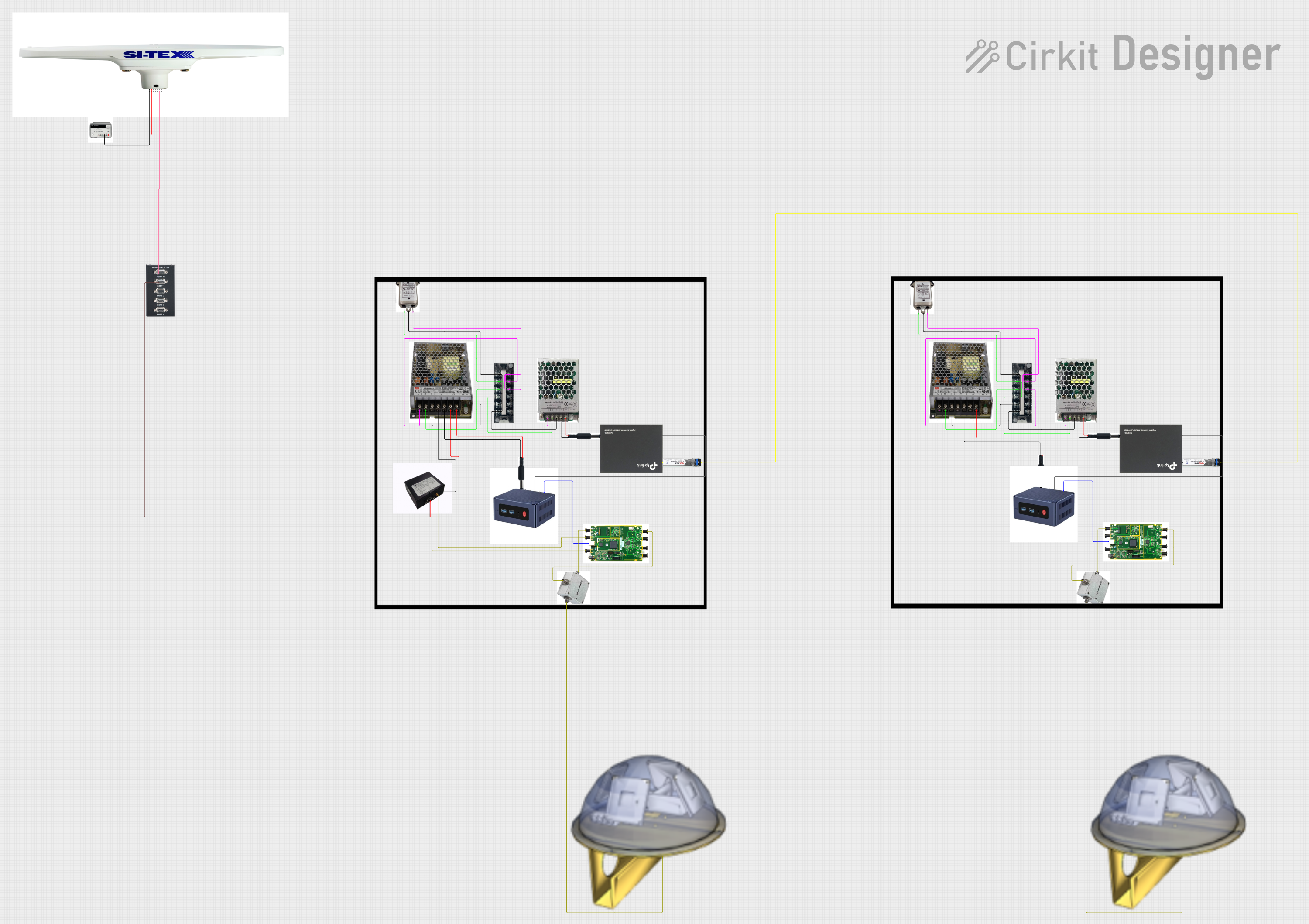
How to Use IN5822: Examples, Pinouts, and Specs

 Design with IN5822 in Cirkit Designer
Design with IN5822 in Cirkit DesignerIntroduction
The IN5822 is a Schottky barrier rectifier diode manufactured by Schottky Barrier Diode. It is widely recognized for its low forward voltage drop and fast switching speed, which make it an excellent choice for applications requiring efficient power conversion and rectification. This diode is commonly used in power supplies, DC-DC converters, freewheeling diodes, and polarity protection circuits.
Explore Projects Built with IN5822

 Open Project in Cirkit Designer
Open Project in Cirkit Designer
 Open Project in Cirkit Designer
Open Project in Cirkit Designer
 Open Project in Cirkit Designer
Open Project in Cirkit Designer
 Open Project in Cirkit Designer
Open Project in Cirkit DesignerExplore Projects Built with IN5822

 Open Project in Cirkit Designer
Open Project in Cirkit Designer
 Open Project in Cirkit Designer
Open Project in Cirkit Designer
 Open Project in Cirkit Designer
Open Project in Cirkit Designer
 Open Project in Cirkit Designer
Open Project in Cirkit DesignerCommon Applications:
- Power supply rectification
- DC-DC converters
- Freewheeling diodes in motor control circuits
- Polarity protection in electronic devices
- High-frequency switching applications
Technical Specifications
The IN5822 is designed to handle high current and operate efficiently in low-voltage applications. Below are its key technical specifications:
| Parameter | Value |
|---|---|
| Maximum Repetitive Reverse Voltage (VRRM) | 40V |
| Average Forward Current (IF(AV)) | 3A |
| Peak Forward Surge Current (IFSM) | 80A |
| Forward Voltage Drop (VF) | 0.525V (at 3A) |
| Reverse Current (IR) | 1mA (at VR = 40V) |
| Operating Temperature Range (TJ) | -65°C to +150°C |
| Storage Temperature Range (TSTG) | -65°C to +150°C |
| Package Type | DO-201AD |
Pin Configuration:
The IN5822 is a two-terminal device with the following pin configuration:
| Pin | Description |
|---|---|
| Anode | Positive terminal |
| Cathode | Negative terminal |
The cathode is typically marked with a band on the diode's body for easy identification.
Usage Instructions
How to Use the IN5822 in a Circuit:
- Polarity Matters: Ensure the anode is connected to the positive side of the circuit and the cathode to the negative side. The cathode is marked with a band on the diode.
- Current Handling: Verify that the circuit's current requirements do not exceed the diode's maximum average forward current (3A).
- Voltage Ratings: Ensure the reverse voltage in the circuit does not exceed the diode's maximum repetitive reverse voltage (40V).
- Heat Dissipation: If the diode operates near its maximum current rating, consider adding a heatsink or ensuring proper ventilation to prevent overheating.
- Switching Applications: The IN5822's fast switching speed makes it suitable for high-frequency circuits, such as DC-DC converters.
Example Circuit:
Below is an example of using the IN5822 as a rectifier in a basic power supply circuit:
AC Input --> Transformer --> IN5822 --> Capacitor --> DC Output
Using the IN5822 with an Arduino UNO:
The IN5822 can be used for polarity protection in Arduino circuits. Below is an example:
Circuit Setup:
- Connect the IN5822's anode to the positive terminal of the power supply.
- Connect the cathode to the Arduino's VIN pin.
- The diode will prevent damage to the Arduino if the power supply is connected with reversed polarity.
Arduino Code Example:
// Example code for Arduino UNO with IN5822 for polarity protection
// This code assumes the IN5822 is used to protect the Arduino's VIN pin.
void setup() {
// Initialize serial communication for debugging
Serial.begin(9600);
Serial.println("Arduino is powered and running!");
}
void loop() {
// Main loop does nothing in this example
delay(1000);
}
Best Practices:
- Always check the diode's orientation before powering the circuit.
- Use a capacitor in parallel with the load to smooth out voltage fluctuations in rectification applications.
- Avoid exceeding the diode's maximum ratings to ensure long-term reliability.
Troubleshooting and FAQs
Common Issues:
Diode Overheating:
- Cause: Excessive current or insufficient heat dissipation.
- Solution: Reduce the current load or add a heatsink to the diode.
No Output Voltage:
- Cause: Incorrect diode orientation.
- Solution: Verify the anode and cathode connections.
High Reverse Leakage Current:
- Cause: Operating the diode near its maximum reverse voltage.
- Solution: Use a diode with a higher reverse voltage rating if necessary.
Circuit Not Functioning as Expected:
- Cause: Faulty diode or incorrect circuit design.
- Solution: Test the diode with a multimeter and verify the circuit design.
FAQs:
Q1: Can the IN5822 handle AC input directly?
A1: No, the IN5822 is a rectifier diode and can only handle one polarity of current. For AC input, use a bridge rectifier configuration with multiple diodes.
Q2: What happens if I exceed the diode's maximum ratings?
A2: Exceeding the maximum current or voltage ratings can cause the diode to overheat, fail, or permanently short-circuit.
Q3: Can I use the IN5822 in high-frequency circuits?
A3: Yes, the IN5822's fast switching speed makes it suitable for high-frequency applications like DC-DC converters.
Q4: How do I test if the IN5822 is working?
A4: Use a multimeter in diode mode. Connect the positive lead to the anode and the negative lead to the cathode. A forward voltage drop of approximately 0.5V indicates the diode is functional.
By following this documentation, users can effectively integrate the IN5822 into their electronic projects and troubleshoot common issues.